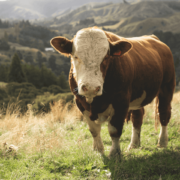Managing The New Investment – The New Bull!
Once the hammer has fallen at auction the bull is now yours! How you handle him from here will have a huge bearing on whether he will be a long-lasting member of your team or not. The stressors that you place him under, the level of nutrition that he receives, as well as several other factors can have a strong positive (or negative) effect on the eventual fertility of this animal.
Give your trucking operator clear instructions of what you expect of them. Make sure they know what bulls can be mixed together. If bulls are coming from long distances discuss where they can be rested off the truck etc. Give all the details to the driver, including your name, contact details, delivery address (rapid number and road name), the tag number and brand of your new bull(s) – it is not uncommon for bulls to be delivered to the wrong address!!
When a bull is relocated to a new environment, the bull is subjected to new viral, bacterial and parasite challenges. This is unavoidable. The key way to maintaining a healthy immune system is to ensure these animals have high quality nutrition (which can be a challenge at this time of the year), have had the appropriate animal health treatments (quarantine drench, lice treatment, BVD vaccination etc), and ensure that they establish new social groups quickly. Not adhering to these principles could have long-lasting negative effects on fertility.
When the bull(s) arrive at your farm, let them settle in by leaving them in the yards overnight and observe how they are reacting to their now home. Give them fresh water and good quality hay. If they are fighting you might have to split them, depending on how serious it is. Two bulls fighting is often less of a concern than 3 bulls fighting as sometimes the third bull will broadside one of the bulls locked in battle and serious injury can result.
If you have purchased only one bull, then find a mate or two for him straight away (this could be steers or quiet cows not older sire bulls). If you have bought multiple bulls from a number of different management groups or studs it is often better to put them all together at once. Introducing new bulls into a mob one at a time can lead to the new bull being given a very hard time indeed by his contemporaries.
Whilst the bulls are still new in their environment, take time to “train” them. Make sure they are familiar with the yards and how they work. During this time, you can understand your new bulls and work the bulls that are unsettled. Let them get use to you and how you handle stock – because this will be different to where they have come from.
Lastly and perhaps most importantly, ask the question about Mycoplasma bovis. Where the bulls are coming from are they close to farm that has tested positive for M bovis, do they trade a lot of cattle, do they have neighbours that trade a lot of cattle. For a lot of high country stations, sire bulls are the only animals that are bought on to the property. You need to be weary about purchasing animals that say yes to any of the above questions. It is best to have that uncomfortable discussion now, rather than have an even more uncomfortable discussion with MPI later.
Andrew Cribb
East Coast Vets – andrew.cribb@ecfv.co.nz



